Beyond the swings and slides
When Arzu Ustayeva takes her three children to play near her home in the Azerbaijani capital Baku, she has a lot of choices, from the neighborhood playground to the city’s prominent Zarifa Aliyeva Park. Her only complaint is the state of the grounds and equipment.
“I wish there was someone who monitors this, cleans up and fixes the equipment,” she says.
Playgrounds in Baku and other cities are usually designed projects—planned as part of a specific development, explains Anar Aliyev, a blogger-urbanist and the founder of the “People-oriented cities” (İnsan yönümlü şəhərlər) project.
A standard playground in Baku consists of slides, swings, and some equipment for smaller kids; more elaborate playgrounds include a sports complex, a football pitch, and a gazebo. The standards have evolved over the past decade. The Executive Power of Baku City (the mayor's office) told Chai Khana that each district is free to evaluate the condition of its playgrounds and renovate them as needed.
Blogger Aliyev said it is impossible to assess the quality of all the playgrounds in the city, although as a general rule they tend to adhere too closely to the traditional design of a couple swings and slides.
“It is important that there are no limits in that playground, kids should be given as much freedom as possible. There is a saying that if a playground is interesting not only for children, but also for adults, it is a good playground,” he says.
“A playground should not end with two swings. It should be a large complex, designed from a children's point of view.”
Psychologist Leyla Shamilova stresses the importance of playgrounds as one of the first places where children can socialize with their peers and realize boundaries, and control their emotions and whims, which eventually also leads to developing problem-solving abilities.
She notes it is recommended that children spend at least one hour a day at playgrounds. “Interactions and activities on a playground may seem easy to us, but if we analyze children’s brains and physical skills, they require a lot of ability,” she says. “For a two-three-year-old, climbing a staircase to the slide is a big accomplishment and requires motor skills; for a four-year-old to be waiting for their turn, understanding danger and risks is also a sign of their skills and capabilities.”
Parks and playgrounds dot the landscape in Baku, but quality, cleanliness and access vary greatly depending on a child’s address.
For instance, in some neighborhoods, the best option costs money to enter, which can cause problems, Shamilova says. Some playgrounds are owned by private individuals and are located in the common yards, near public parks. That makes it hard for parents to skip them; they either end up paying every day or being forced to regularly ignore their children’s pleas to try the rides.
“They [children], of course, do not understand the concept of money…and there is usually a queue for this kind of attraction, which raises a child’s curiosity and interest,” Shamilova says. This eventually leads to a division between kids, and “how they interact with each other.”

Residents living in the nearby building on Huseyn Javid Avenue painted and decorated the walls. “This is the corner for the yard where men, women, girls and boys separately, as well as children gather in their spare time. Personally, I usually come here to be on my own and swing on swings,” resident Hajar Asgarli says.
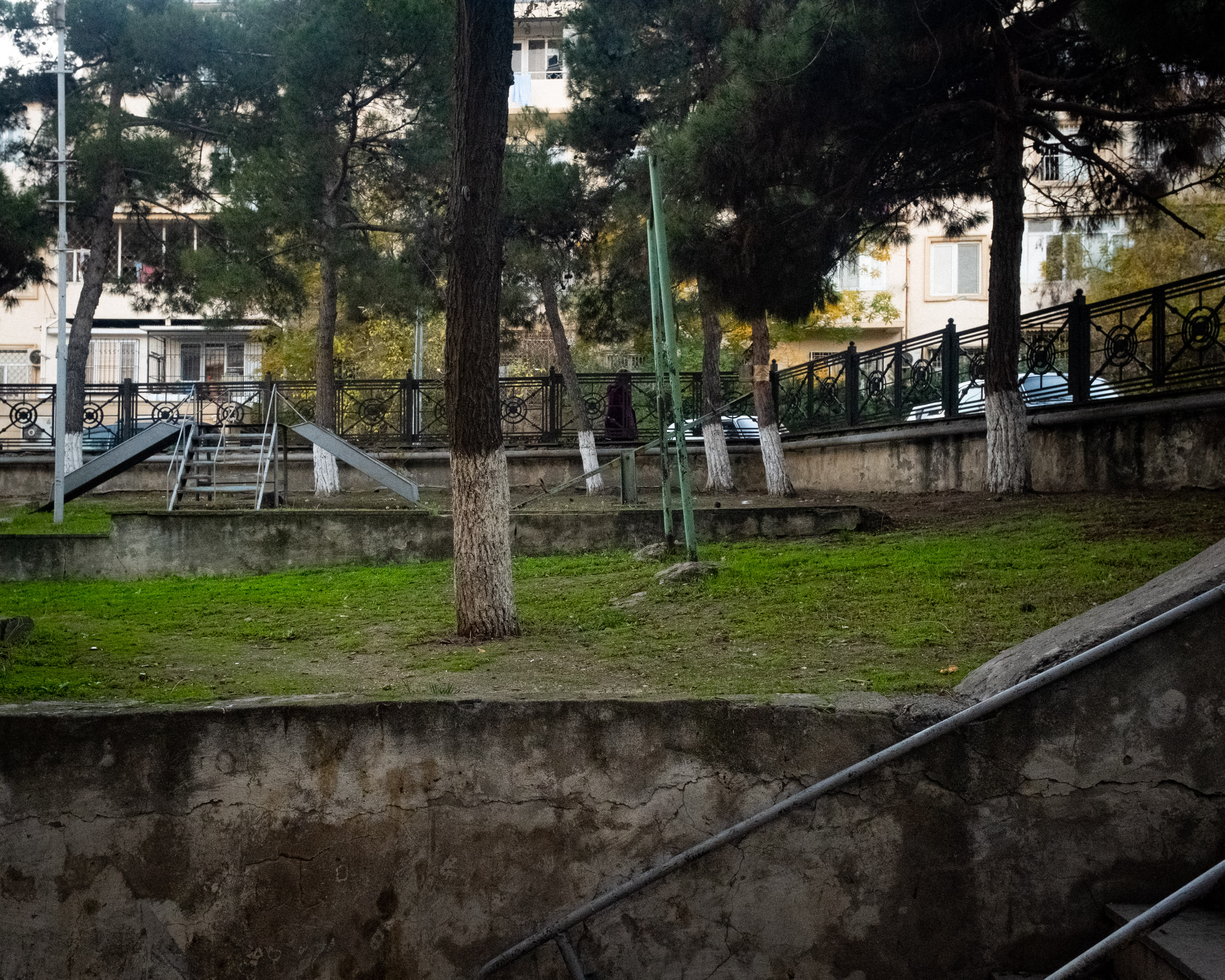
Grass and weeds cover the slides and steps at the playground on Taghi Shahbazi Street near the Azerbaijan State Pedagogical College, in the city center of Baku.
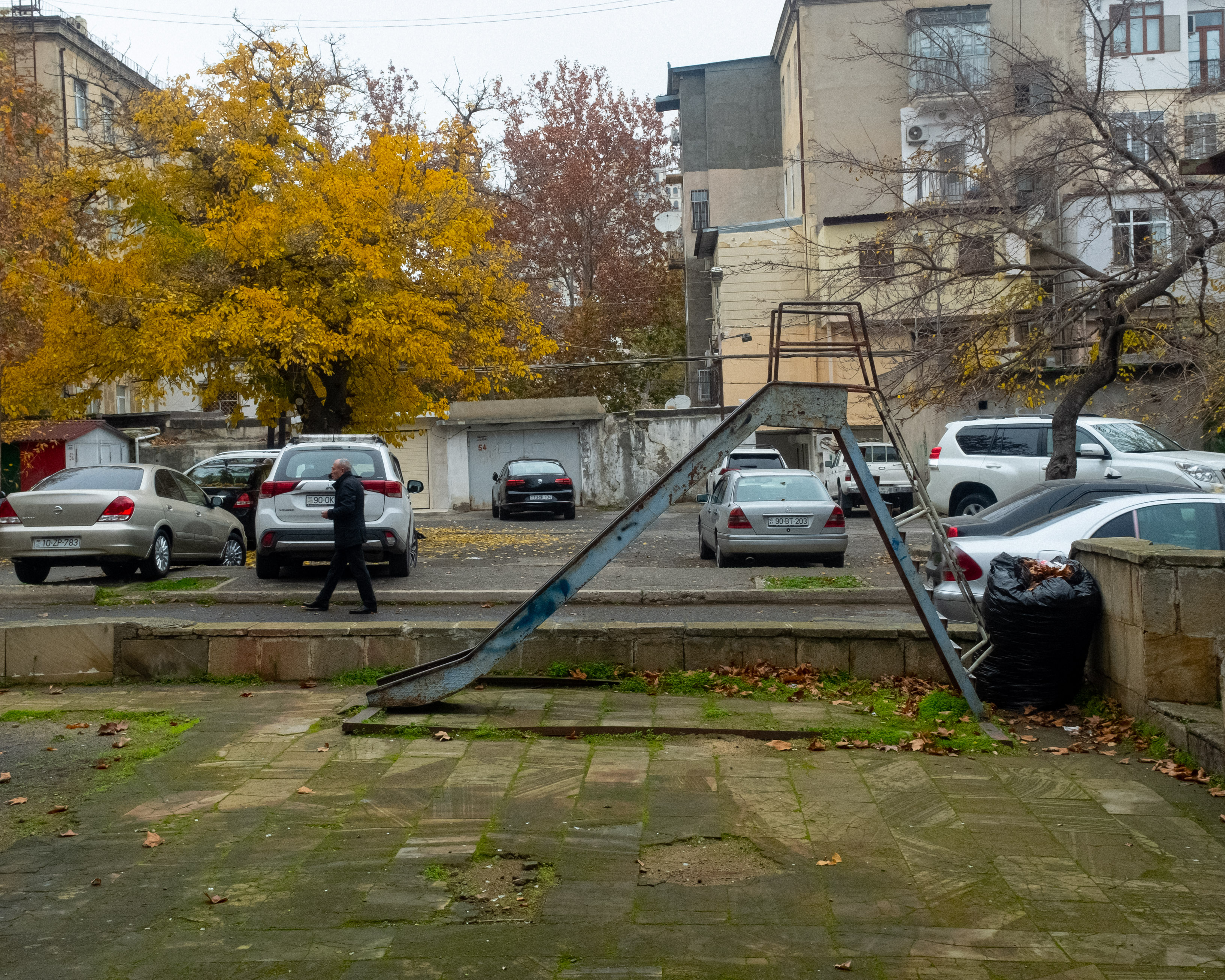
Another area allocated for children on Huseyn Javid Avenue. “Mostly teenage boys gather here. Sometimes someone uses the slide. On Novruz, this is where the fire is lit,” added Hajar.

This playground is located in the yard of a building complex on Sattar Bahlulzade Street. Due to the increased number of vehicles and the lack of parking spaces, cars have encroached on the playground, a common occurrence in Baku.
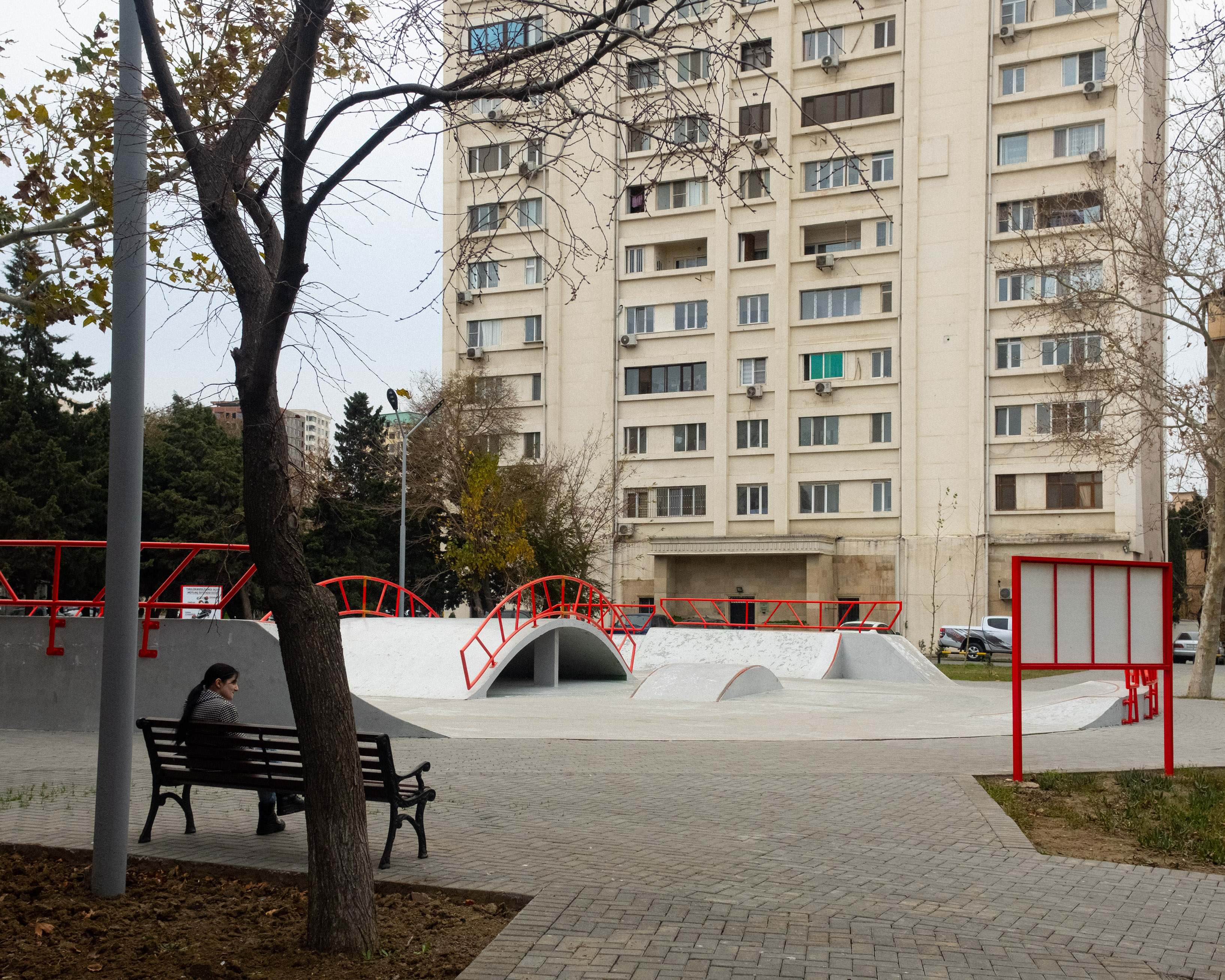
Skateparks have become popular in Baku. This one, named after George Enescu, a Romanian composer, was recently built for children on Jafar Khandan Street.
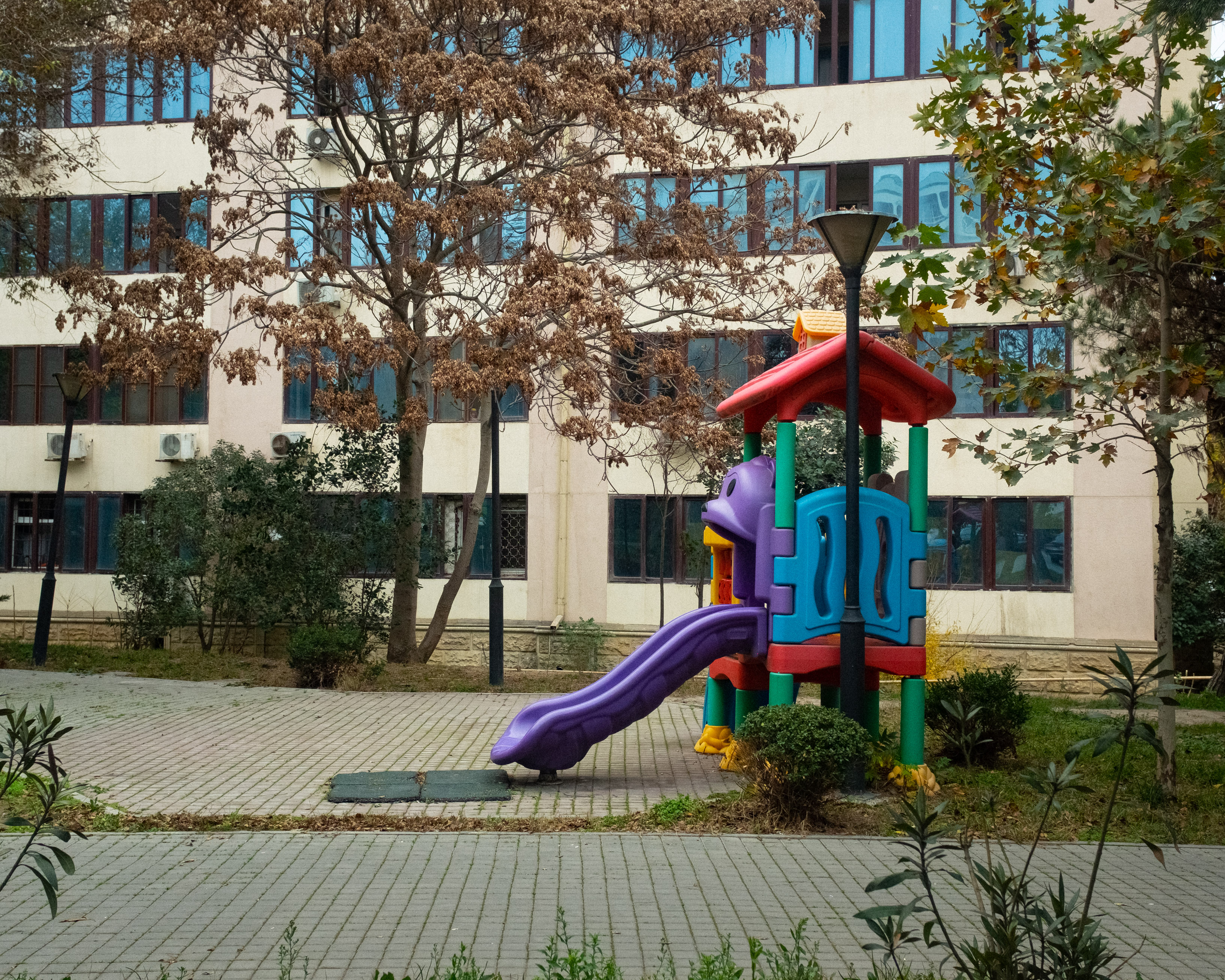
This small playground is located near a busy intersection on Azadliq Avenue in Baku’s 8th microregion.
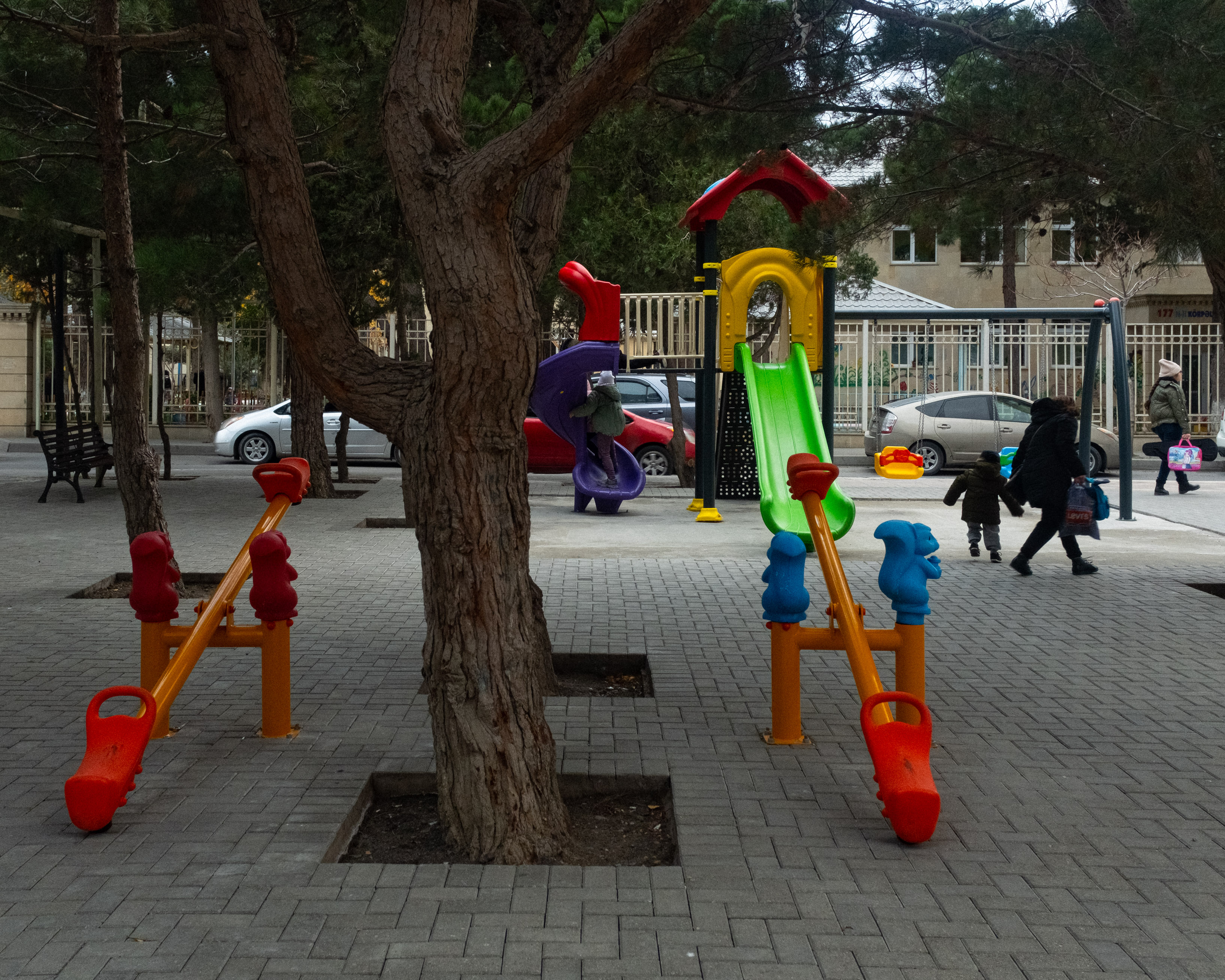
A new children's park near Baku’s School 135. Samaya, a nearby resident, said the playground was built after his son noticed children in the area needed a play area and residents met with the head of the local executive authority.
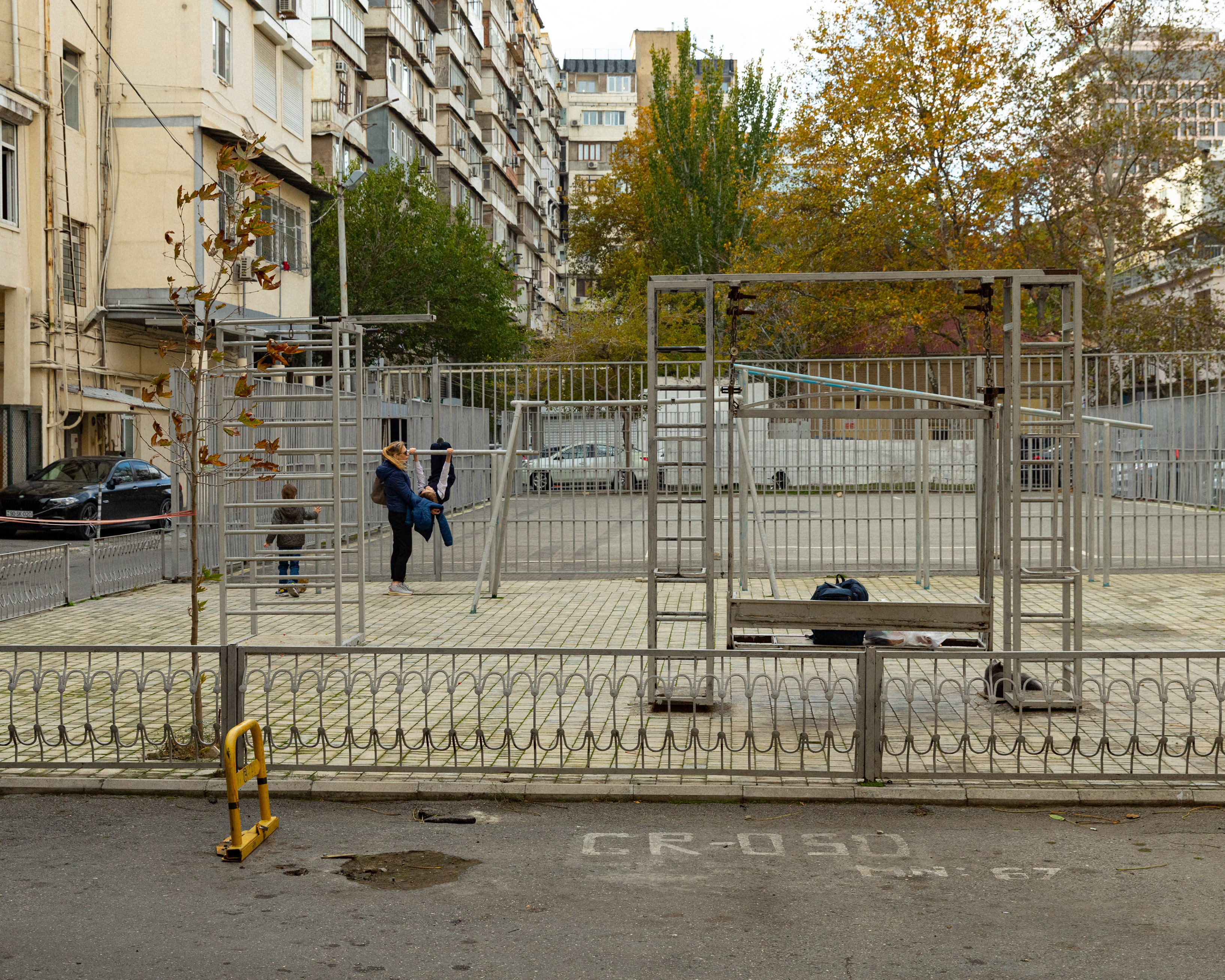
A playground on Khagani Street in central Baku. Parents say this is one of the few playgrounds in the city center.
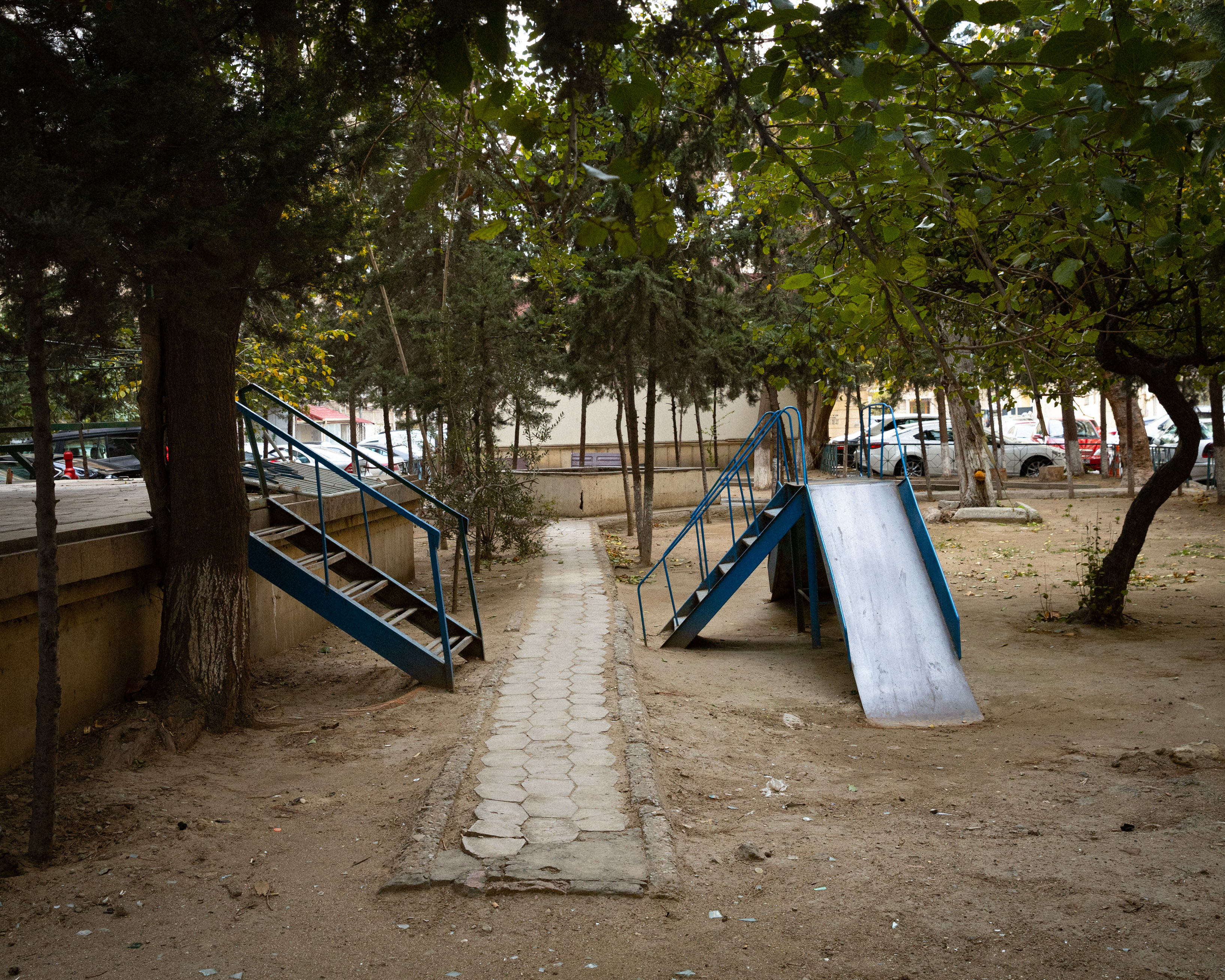
A Soviet-era slide at a playground on Fikrat Amirov Street.
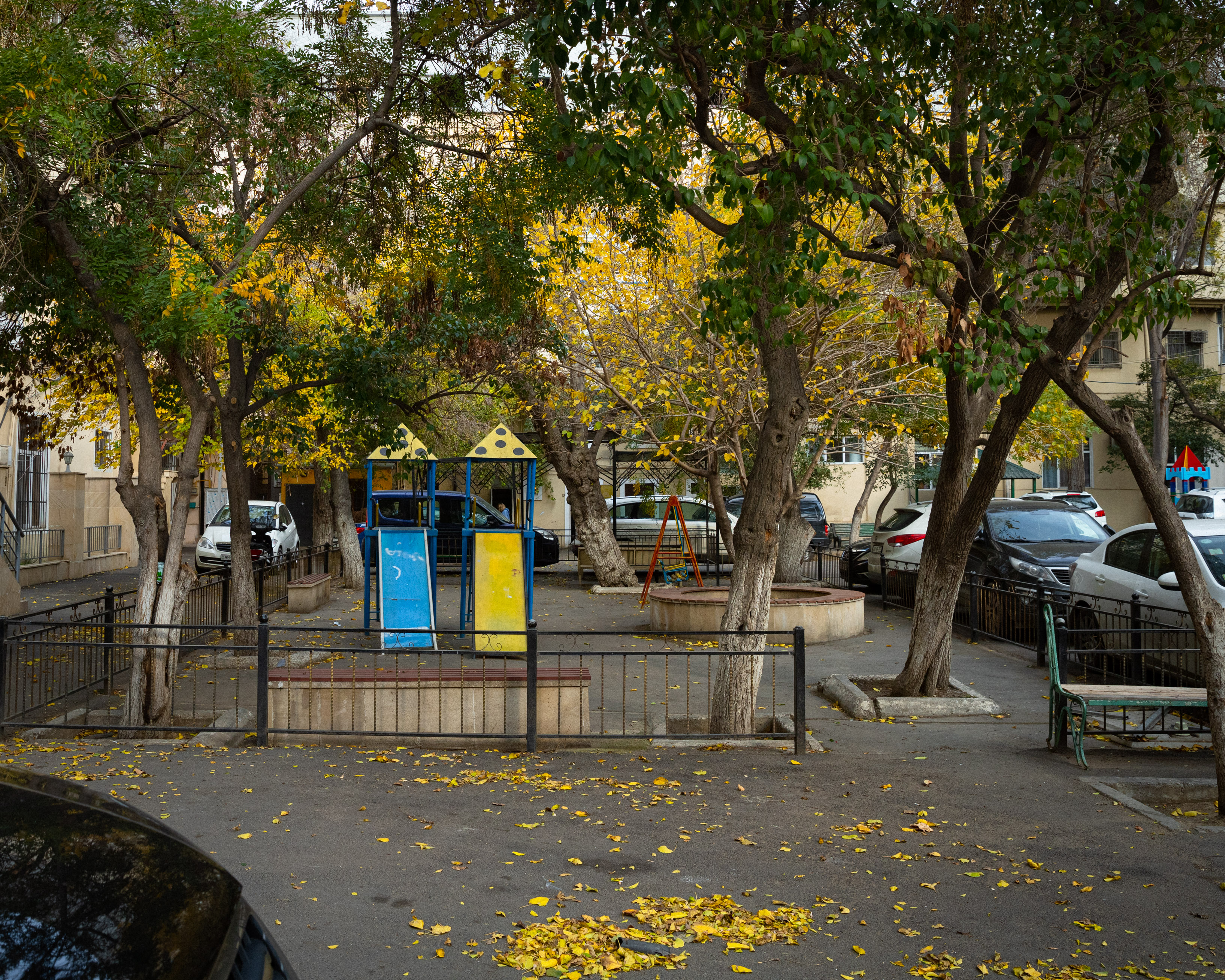
A playground on Zarifa Aliyeva Street in front of the Ministry of Transport, Communications and High Technologies in Baku.
To view similar stories from Armenia and Georgia, please see:
Finding a place for future citizens: Playgrounds in Armenia
Playground Love | Leftovers for children
This article was produced in the framework of Chai Khana Fellowship program - Summer/Autumn 2022
This article was prepared with support from the Friedrich-Ebert-Stiftung (FES) South Caucasus Regional Office. All opinions expressed are the author’s alone, and do not necessarily reflect the views of FES.
The networking event and the mentorship of the fellows was supported by the Federal Foreign Office and the Civil Society Cooperation program, implemented by the Deutsche Gesellschaft e. V.
DONATE NOW

